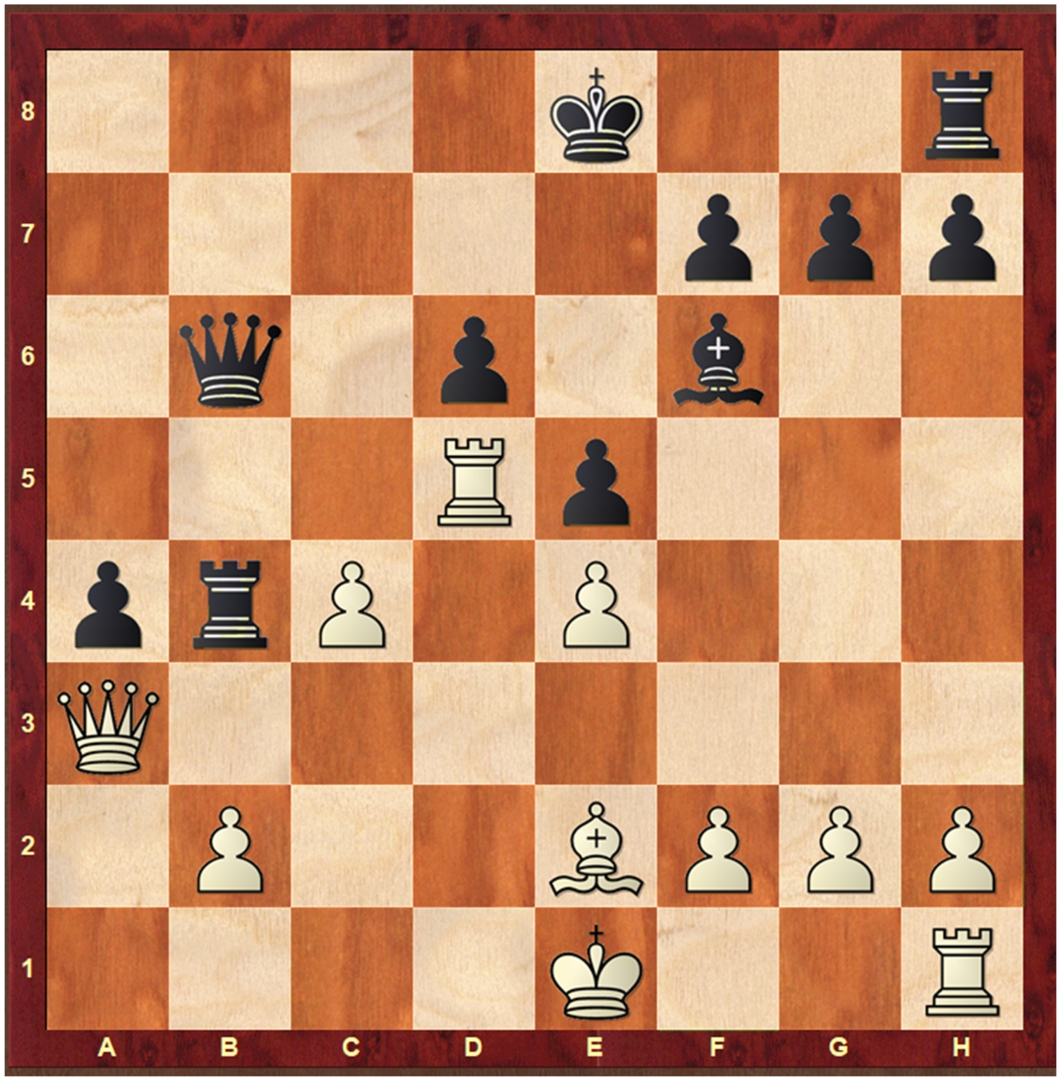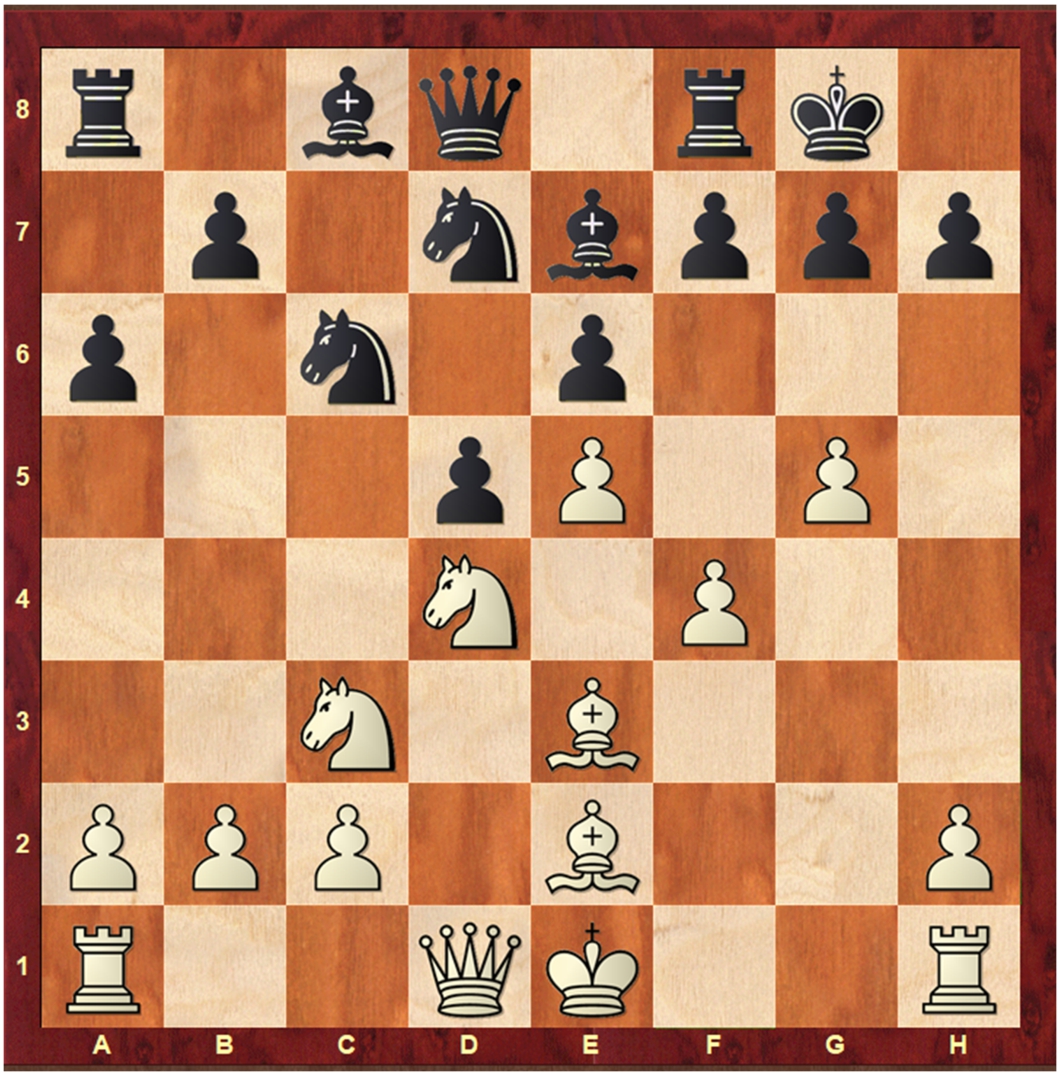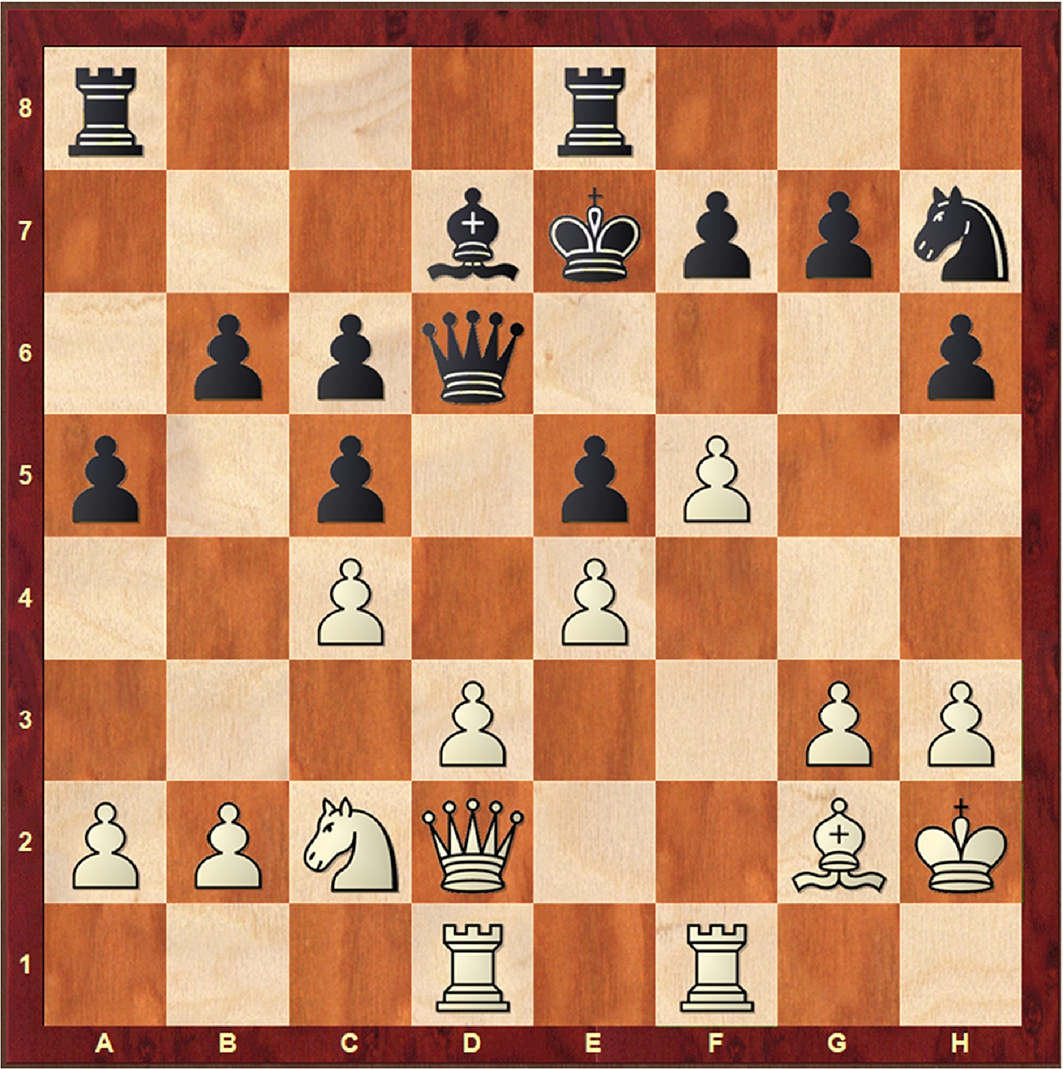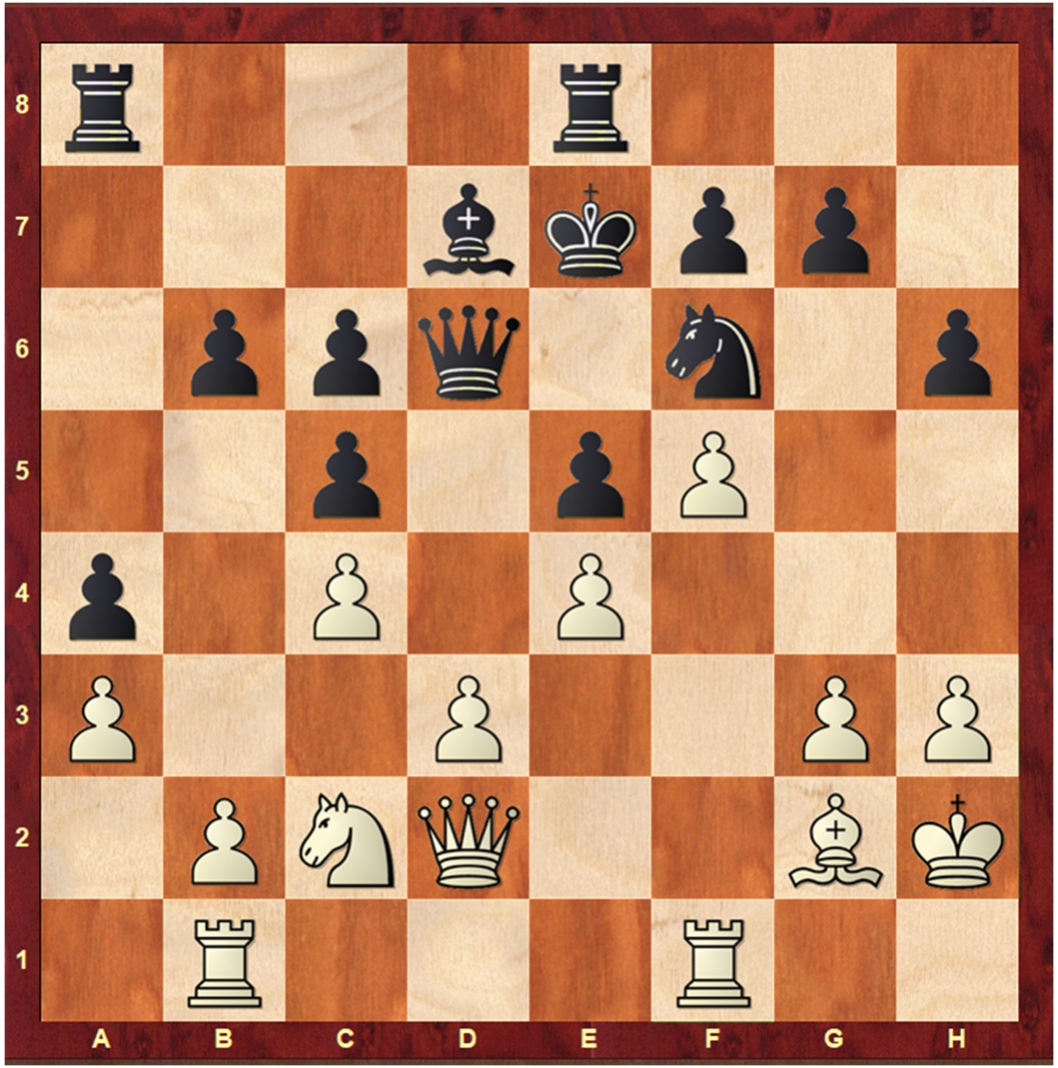Artificial intelligence and correspondence chess: A harbinger for other endeavors
I have just recently won the 32nd World Correspondence Chess Championship. As excited as I am to have won the World title, I am equally concerned about what my experiences predict for our immediate futures. In this short paper, I would like to touch upon the types of tools that are now available for competitive chess, and to show some examples of recent wins and how it was possible, just two years ago, to overcome the hardware and software tools for chess. I finally want to examine one of my games in the World Final to demonstrate how very difficult it has become to win at the highest levels of correspondence chess.
I am mindful throughout that the tools available for correspondence chess have analogs in most professional disciplines. Accountants, financial consultants, doctors, artists, lawyers, and even taxi drivers will most certainly find their professions under stress within a decade. For purposes here, I shall focus only upon my own discipline, correspondence chess, which has long been viewed as the canary in the coal mine. Make correspondence irrelevant, and the other disciplines are not likely far behind.
=
In years past, correspondence players relied primarily upon printed source material. As a consequence, correspondence chess was exciting and competitive. Hans Berliner won the 5th World Championship with a +12 score, three points ahead of the field. As late as 1996, I won the North American Invitational with a +9 score. Computers were available, but the engines that were available to the public were not strong enough meaningfully to influence play.
I recently subjected my old, cherished correspondence games to analysis by neural net engines. To my chagrin, almost all of the games contain serious errors. In fairness to me, Matthew Sadler and Steve Giddens, Re-Engineering the Chess Classics (New in Chess: 2023) recently tested 35 classic games in much the same way and, while I might quibble about the games they selected for testing, they also found conspicuous mistakes.
My win in the WF32 involved a +2 result and considerable fortune. One win, for example, came as the result of a clerical error. We are now regularly seeing strong correspondence events ending without a single win. The reasons are obvious. Most players have affordable access to powerful desktop setups. Large, multi-million-game databases are easy to assemble or purchase, and there are powerful tools for each phase of the game.
For the opening, ChessBase provides Let’s Check, a recording of every computer run by users, and Livebook, a record of every move made by its users. A Chinese Neural Net Database (https://www.chessdb.cn/queryc_en/) provides relative evaluations of every opening move and variation. It is relatively easy to examine every game that our opponents have ever been played and every game ever played in each opening variation.
For middlegames, we can search for games that involve matching or similar pawn structures. For endgames, we now benefit from Tablebases, decades of computer examination of every position involving up to seven units on the board.
Engines that used to involve brute force searches have given way, in just the past two years, to neural net approaches, notably Leela and Stockfish 16. Such use is fully legal within the rules of the ICCF.
Not that long ago, I was still able to fashion wins by out-researching my opponents. I offer here two quick examples.
Edwards, Jon – Cruzado Duenas, Carlos (2594)
1.e4 c5 2.Nf3 Nc6 3.d4 cxd4 4.Nxd4 Nf6 5.Nc3 e5 6.Ndb5 d6 7.Bg5 a6 8.Na3 b5 9.Nd5 Be7 10.Bxf6 Bxf6 11.c4 b4 12.Nc2 a5 13.Qf3 Be6 14.Rd1 a4 15.Be2 b3 16.axb3 Rb8 17.b4 Bxd5 18.Rxd5 Nxb4 19.Nxb4 Rxb4 20.Qa3 Qb6
We have reached a position that was prominently discussed in Vassilios Kotronios’ book The Sicilian Sveshnikov (Grandmaster Repertoire 18, Quality Chess 2014).
Fig. 1.
Edwards – Cruzado Duenas, with white to move after 20...Qb6.

In the book, he gives only 21.0-0, which leads to a queen and bishop of opposite colored endgame. White is up a pawn in that line and, as a consequence, engines of the time favor 21.0-0 despite the fact that the endgame is fully drawn since the defending side can establish a blockade on the dark squares.
Instead, I played a novelty with 21.Rb5, which leads instead to a winning rook and bishop of opposite colored endgame. The evaluation was well outside the horizon of the engines, but not outside the horizon of a hard-working human. Here is the rest of the game.
21.Rb5 Rxb5 22.cxb5 Qa5+ 23.Kf1 0–0 24.g3 Qd2 25.Qxa4 Qxb2 26.Qc4 Bd8 27.Kg2 Bb6 28.Rc1 Qa3 29.Rc3 Qc5 30.Rf3 g6 31.g4 Qxc4 32.Bxc4 Kg7 33.Bd5 f6 34.Kf1 Rc8 35.Bc6 Rh8 36.Ra3 Bc5 37.Ra6 Rb8 38.f3 f5 39.gxf5 gxf5 40.Ke2 Kf6 41.Kd3 f4 42.Kc4 Ke7 43.Bd5 Rc8 44.Kb3 Rb8 45.Ka4 Bb6 46.h4 h5 47.Kb4 Kd8 48.Ra2 Rc8 49.Bc6 Bc5+ 50.Kc4 Kc7 51.Rg2 Kb6 52.Kd5 Rd8 53.Rg7 Rb8 54.Ke6 Rd8 55.Rg5 Rh8 56.Rg6 Rd8 57.Ke7 Rh8 58.Kf7 Rh7+ 59.Kf6 Ra7 60.Rg8 Bf2 61.Kg5 Re7 62.Rb8+ Ka7 63.Ra8+ Kb6 64.Ra2 Bg3 65.Ra6+ Kc5 66.Kxh5 Rh7+ 67.Kg6 Rxh4 68.Bd7 Rh2 69.Rc6+ Kd4 70.Rxd6+ Ke3 71.Bg4 Be1 72.Rd1 Ba5 73.Kf5 Rb2 74.Kxe5 Rxb5+ 75.Rd5 Bc3+ 76.Ke6 Rb8 77.e5 1–0
The next game, from the Spanish Masters, was against Evgeny Lobanov, the reigning Russian correspondence champion. As in the first game, the novelty was prepared well before play started. On move 12, I uncorked a novelty that was human inspired and computer confirmed. Interestingly, humans and machines had missed the power of the move because, at first glance and at low depth, Black appears to win a piece after 12.Bd3 Qb6 13.Na4 Qa5+ 14.c3 Nxd4 15.Bxd4 b5, but it is only there that the position becomes clear after 16.Bxh7!!+-
Once Lobanov realized that 14
Edwards, J – Lobanov, E
Spanish Masters, 2017
1.e4 c5 2.Nf3 d6 3.d4 cxd4 4.Nxd4 Nf6 5.Nc3 a6 6.Be3 e6 7.Be2 Be7 8.f4 0–0 9.g4 d5 10.e5 Nfd7 11.g5 Nc6 12.Bd3!! N Qb6 13.Na4 Qa5+ 14.c3 Ncxe5 15.fxe5 Nxe5 16.Bc2 Nc4 17.Bf2 Bd7 18.b4 Qd8 19.Nc5 Bxg5 20.Qf3 Bc8 21.Rg1 g6 22.Bb3 e5 23.Nc2 Nd2 24.Qxd5 Nxb3 25.Qxd8 Rxd8 26.Nxb3 Bf4 27.Bg3 Bh6 28.Bh4 Rd3 29.Rg3 Rxg3 30.Bxg3 Bf5 31.Na3 Rc8 32.c4 Bg4 33.c5 e4 34.Nc4 f5 35.Bd6 f4 36.Ne5 Bh3 37.a4 Bg7 38.Nd2 g5 39.Ndc4 Ra8 40.Rd1 Bf6 41.Nb6 Re8 42.Nbd7 Kg7 43.b5 axb5 44.axb5 e3 45.c6 bxc6 46.b6 Bxd7 47.Nxd7 Bc3+ 48.Ke2 f3+ 49.Kxf3 e2 50.Rg1 e1Q 51.Rxe1 Bxe1 52.b7 Kf7 53.b8Q Rxb8 54.Nxb8 Ke6 55.Ba3 c5 56.Bxc5 1–0
This discovery was especially fun because Anand reached the same position a month after this game ended, and instead played 12.Qd2.
Fig. 2.
Edwards – Lobanov, with white to move after 11...Nc6.

Such was the exciting state of the correspondence game in the pre-neural net days. But everything has changed with the emergence of the new, very powerful new engines.
The following game occurred in the World Final. I chose the Glek variation of the Vienna because my opponent had previously met it inaccurately, and because it permits me to maneuver with my pieces at length within a fixed pawn structure.
Edwards, Jon – Osipov, Sergey Adolfovich
ICCF World Final, 2020
1.e4 e5 2.Nc3 Nf6 3.g3 Bc5 4.Bg2 0–0 5.Nge2 Nc6 6.0–0 a5 7.h3 Re8 8.d3 Nd4 9.Nxd4 Bxd4 10.Nb5 Bb6 11.c4 h6 12.Nc3 d6 13.Kh2 Bd4 14.f4 Bd7 15.Ne2 Bc5 16.Qc2 c6 17.Bd2 Qe7 18.Rac1 Bb4 19.Be3 Bc5 20.Bxc5 dxc5 21.f5 Kf8 22.Ng1 Qd6 23.Nf3 Nh7 24.Rcd1 Ng5 25.Ne1 Nh7 26.Qd2 Ke7 27.Nc2 b6
The structure is well established. Black has already begun a king migration to sidestep white’s kingside pressure. White’s plan involves four steps. First, threaten the b-pawn break in order to encourage Black to play a5-a4.
Fig. 3.
Edwards – Osipov, with white to move after 27...b6.

28.a3 Nf6 29.Rb1 a4
Step 1 was easy. White’s goal, which involves three more steps, is to force Black to advance the b-pawn all the way to b3. If white succeeds, there is a relatively simply reorganization of white’s pieces, notably the doubling of the rooks on the g-file, that will overwhelm Black’s position.
Fig. 4.
Edwards – Osipov, with white to move after 29...a4.

30.Ne1 Reb8 31.Rf2 Be8 32.Bf1 Nd7 33.Nf3 f6 34.Qe1 Kd8 35.Rc2 Kc7 36.Be2 Bf7 37.Qf2 Qe7 38.Qe3 Rh8 39.Rbc1 Kb7 40.Nh4 Nf8 41.Rc3 Kc7 42.Bf3 Nd7 43.Qe2 Rhb8 44.Bh5 Bg8 45.R3c2 Nf8 46.Ng2 Nd7 47.Ne3 Kd8 48.Rd2 Kc7 49.Qe1 Qd6 50.Ng2 Rd8 51.Nh4 Nf8 52.Nf3 Kb7 53.Rdd1 Kc7 54.Rc3 Kb7 55.Qf2 Kc7 56.Rcc1 Kb7 57.Kg2 Qc7 58.Rc3 Qd6 59.Rb1 Kc7 60.Ng1 Qe7 61.Kh2 Nd7 62.Qe3 Qd6 63.Rd1 Ra7 64.Kg2 Raa8 65.Rcc1 Qe7 66.Rd2 Qd6 67.Ne2 Rdb8 68.Qf2 Kb7 69.Nc3 Kc8 70.Qe1 Ra7 71.Bd1 b5
It took 37 moves to get black to advance the b-pawn to b5. I believe that I can now force b5-b4, but sadly, it will take more than 50 moves without a pawn move or capture to make it happen. I therefore chose another path which, as you can see, allowed the draw.
Fig. 5.
Edwards – Osipov, with white to move after 71...b5.

72.Bh5 Kc7 73.Qd1 Kc8 74.Qe1 Kd8 75.h4 Rab7 76.Kh3 Ke7 77.Ne2 Qc7 78.Qf2 Ra8 79.cxb5 cxb5 80.d4 Qd6 81.d5 c4 82.Rc3 Nc5 83.Qf3 Qd7 84.Nc1 g5 85.Na2 Bh7 86.Kh2 Bg8 87.Kg1 Kd6 88.Bg6 Rbb8 89.Rh2 Qa7 90.Kf1 Nd3 91.Nc1 Nc5 92.Na2 Nd3 93.Nc1 Nc5 94.Qe3 Nb3 95.Qe1 Qd4 96.Bh5 Rc8 97.Nxb3 axb3 98.Rd2 Qa7 99.Rd1 Bf7 100.Be2 Be8 101.g4 Bd7 102.Kg2 Qc5 103.Rh3 Ra4 104.hxg5 hxg5 105.Rh6 Rf8 106.Qc3 b4 107.axb4 Qxb4 108.Qxb4+ Rxb4 109.Kf3 Ra4 110.Rc1 Ra2 111.Rxc4 Rxb2 112.Rb4 Rc8 113.Rb6+ Kc5 114.Rhxf6 Rh8 115.Rh6 Rxh6 116.Rxh6 Rc2 117.Rh1 b2 118.f6 Be8 119.Bd3 Rc3 ½–½
In all three examples, human play operated outside the horizon of the computers of the time. With the emergence of neural net engines, the remaining main human hope may be to exploit small advantages with long term maneuvering within fixed structures, as in my game against Osipov.
The ICCF is well aware of how hard it has rather suddenly become to win, or even to find workable advantages. At their Amsterdam Congress in 2023, a proposal for a new tiebreaker holds some promise towards encouraging more competitive chess. In that, too, the ICCF is leading the way. It is easy to predict that many disciplines will soon be scrambling to reestablish vibrancy amidst the impact of neural networks and artificial intelligence.




